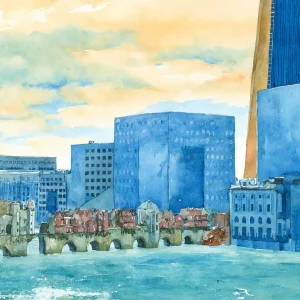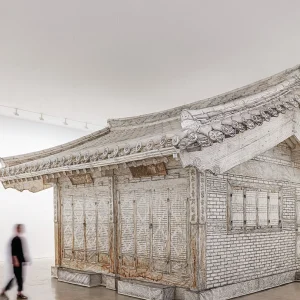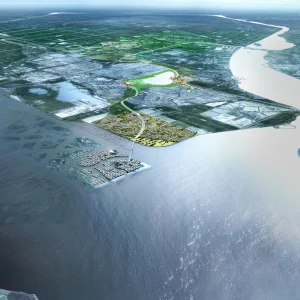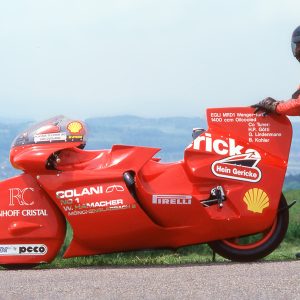The £340 million ($547.8 million) Canary Wharf headquarters building spans 400,000 square feet and over 14 floors. Light Bureau worked with interior specialists Swanke Hayden Connell Architects and M&E engineers Aecom to develop a lighting design solution for the building that provides permeable space with high quality finish, reinforcing KPMG’s brand identity and transparency.
The design brief called for a building with few internal barriers. Light Bureau devised a scheme where lighting creates rhythm and a hierarchy of illumination which naturally renders each space permeable. This sense of openness was particularly important as there are no divisions in the interior space.
Light Bureau sought to integrate lighting and architecture in the building wherever possible, including feature elements. All pendants are set within coffers to ensure every fixture location feels deliberate, meticulous and ‘solid’ as though they are part of the building fabric. Linear extruded fixtures illuminate the entire length of the core wall. The louvers have been fitted with special gaskets which perform three functions of preventing light bleed, concealing flex within the luminaires and also ensuring that they are perfectly straight along the entire length of the core wall.
Specially designed corner sections also ensure the fitting appears continuous around the core. The louvers were specially adapted and painted white to ensure that they ‘flash up’ like an opal diffuser to provide continuity with other fittings while providing higher output ratios associated with open luminaires.
The nine main atria of the building are illuminated with linear fluorescent luminaires utilising specially designed dropped diffusers to provide sideways illumination to the ceiling plane. They provide rhythm through the circulation zone and feature when viewed through the space. Each atrium has a stair that supports KPMG’s collaborative philosophy, linking floors and people. Light Bureau placed discreet fittings under each tread for creating a sculptural element. All atria spaces of the building feature daylight sensors.
A light sculpture was also designed in the reception entrance lobby, enhancing scale of the double height space without enclosing it. Light Bureau team added that they wanted to create a feature which lowered the perceived height of the void so it did not feel as though you were sitting in an empty volume of space while also retaining views through from the mezzanine above. The solution was one of the most complex structures Light Bureau has designed and provided a visual metaphor for the interconnectivity of KPMG’s business.
The presentation suite of KPMG building featured a saw-tooth multifunctional feature ceiling that incorporates luminaires and also houses services such as sprinklers and return air. The staggered ceiling allows sideways light from the higher linear fluorescent luminaires to maximise the light incidental upon the ceiling. LED spotlights provide additional modeling and flexibility to the multi-purpose space.
In the staff dining space, bespoke light fixtures made from bright acrylic have been featured that are inspired from the masculine ‘Paul Smith’ style pinstripe fabric specified by Swanke Haden Connell in the seating booths. The central servery island incorporates a large ceiling feature, also developed specifically for the project, housing concealed linear fluorescent sources and providing a high level of daylight support lighting complimented by LED downlights for accent to the servery counter.
The level 14 client dining suite comprises large volumes for which Light Bureau designed over-size feature pendants with mains dimmable low energy lamps to fill the space with diffuse light and creating a visual statement.
The entire lighting control system was designed according to KPMG’s corporate social responsibility policy for energy conservation utilising daylight sensing plus presence and absence detection or timeclock control to ensure that energy wastage is minimised.
The 2011 Lighting Design Awards were held at the Hilton Hotel, Park Lane in London and saw the participation from over 700 attendees from UK lighting industry. The building had also achieved a BREEAM excellent rating in the past.





